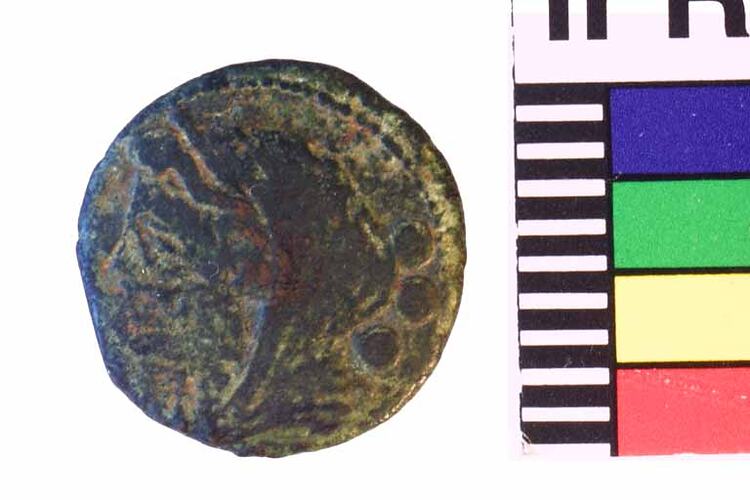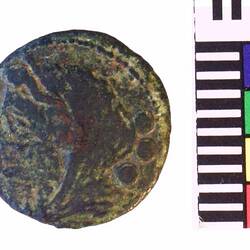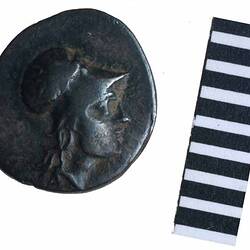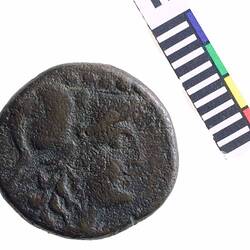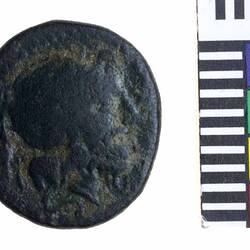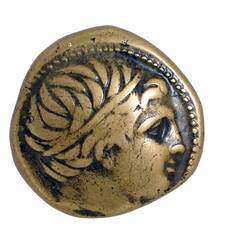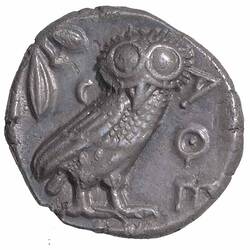Summary
Quadrans from the town of Venusia in Apulia, Italy, circa 200 BC
Mint not recorded
Obverse Description
Head of Hera facing left wearing stephane and veil, behind 3 dots (giving the denomination of quadrans)
Reverse Description
Three crescents with horns pointing outwards. Each contains a star.
Edge Description
Plain
Significance
The area of Italy in which Venusia was placed had been taken over by the Romans in the late 4th and early 3rd centuries BC. The Latin colony named Venusia was founded in 291 BC but retained its pre-Roman monetary system based on decimals, 10 (not 12) uncia to the nummi (Crawford, Coinage and Money under the Roman Republic, p.15).
More Information
-
Collection Names
-
Collecting Areas
-
Acquisition Information
Transfer from National Gallery of Victoria (NGV), 15 Mar 1976
-
Date Issued
circa 200 BC
-
Issued By
Venusia, Calabria, Italy, Ancient Greek States, circa 200 BC
-
Previous Collection
Eugene von Guerard, Melbourne, Greater Melbourne, Victoria, Australia, pre 1880
Eugene von Guerard's collection was acquired by the National Gallery of Victoria in 1880. -
Denomination
-
Material
Copper
-
Axis
11
-
Classification
-
Category
-
Discipline
-
Type of item
-
Dimensions
21 mm (Outside Diameter), 7.735 g (Weight)
-
Shape
Round
-
References
BMC. Italy p.152 no. 25 SNG ANS Part 1 No765 SNG Corpus Christi Part 1 No. 114
[Book] Poole, Reginald S. 1873. A Catalogue of the Greek Coins in the British Museum, Italy., 152 Pages
[Book] Crawford, Michael H. 1985. Coinage & Money under the Roman Republic., 13-16 Pages
[Catalogue] Pullin, Ruth. 2011. Nature Revealed: Eugene von Guerard.
